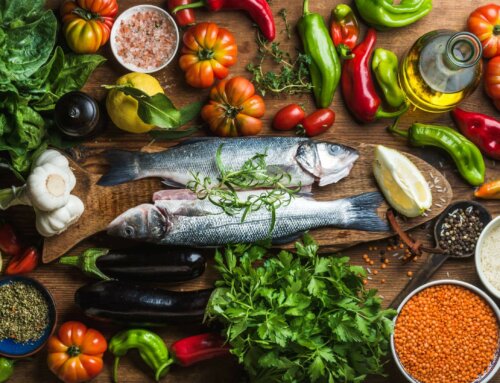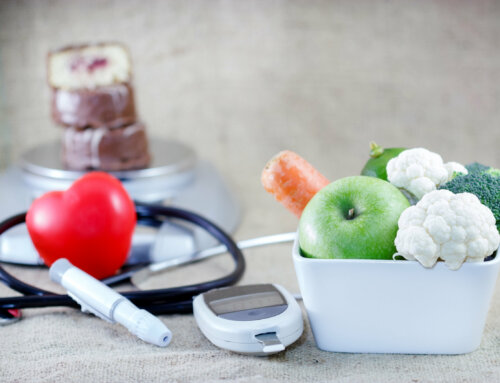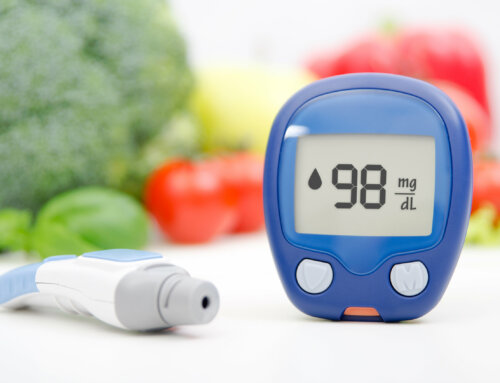Each week I meet with my patients to discuss the impact of their food choices on glucose control. The top 5 most common questions I have about reading a food label are:
The number of servings per container: When looking at a jar of Walden Farms Bleu Cheese Salad Dressing, for example, the serving size listed is for 2 tablespoons and servings per container are 12. Since Walden Farms products have zero calories, carbs, sugar, etc. per serving we may use more than usual. The servings per container listed provide another perspective to assist you in better portion control. One fourth (¼) of the jar provides 3 servings. With 240 mg of sodium per serving, 3 servings would add up to 720 mg of sodium – a high sodium amount for a portion. A low sodium food contains 140 mg per serving.
Amount per serving: lists calories per serving and calories from fat. Calories from fat are calculated by multiplying the total fat by 9 grams (amount of grams in one serving of fat).
Total Fat: includes the heart-unhealthy Saturated and Trans Fats (the only 2 fats required to be listed on the label). Glucerna Mini-Snack bars have 2 grams of Total Fat. A low-fat food has 3 grams per serving. The food manufacturers are not required to list the healthier, unsaturated fats like monounsaturated or polyunsaturated.
You may assume the remaining 1 gram of total fat is coming from unsaturated fat. However, in some cases, the breakdown does not add up to the total. Food labels do not have to include ½ gram amounts. Skim milk has almost ½ gram of fat per serving although it is listed as fat-free.
Total Carbohydrate: includes the amount of dietary fiber, sugar and other carbohydrates (not required to be listed). Brothers All Natural White and Yellow Peach Crisps contain only fruit in their ingredients list. One serving has 7 grams of Total Carbohydrates; there is 1 gram of dietary fiber and 6 grams of natural fruit sugar.
Protein: is listed in grams. Many people think of protein in terms of ounces. One (1) egg is an ounce of protein, the size of a deck of cards is 3 ounces, etc. Seven (7) grams = 1 ounce of protein. For example: Glucerna Butter Pecan flavored drink has 10 grams of protein in one serving, or about 1 ½ ounces.
Take some time to get accustomed to the food labels and be sure to compare! Having this information will assist you in better understanding how minor differences in labels can have a major impact on your diet.
NOTE: Consult your doctor first to make sure my recommendations fit your special health needs.






Leave A Comment